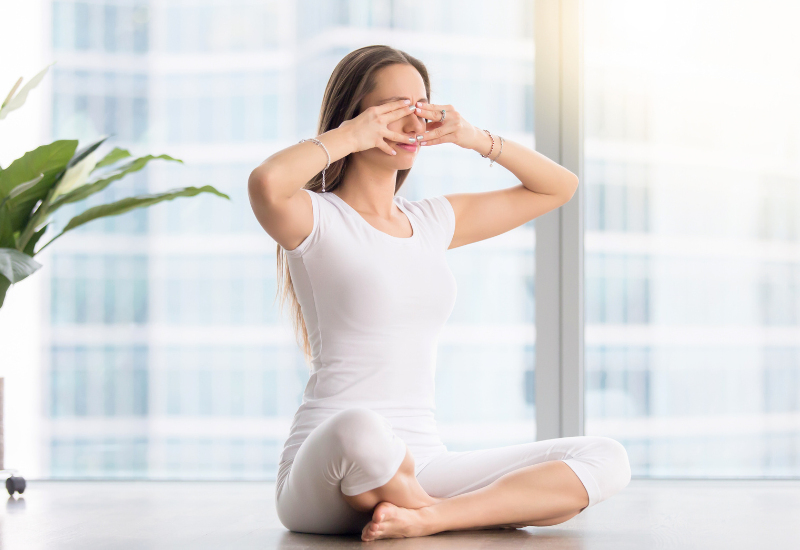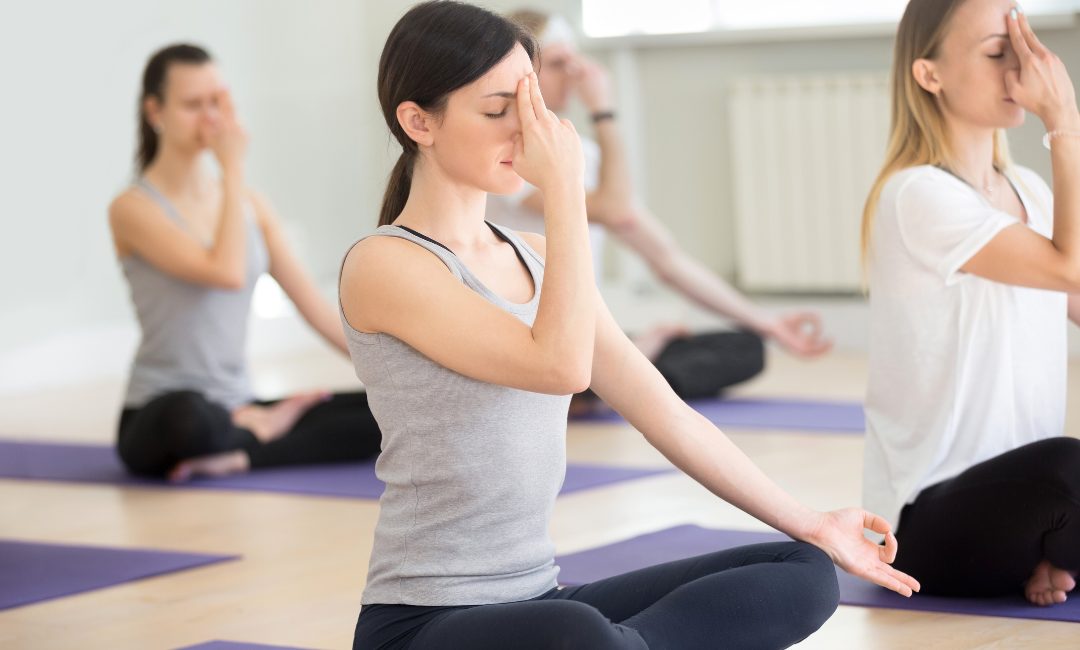In today’s fast-paced world, where stress and anxiety are prevalent, ancient practices that promote well-being are gaining renewed interest. Among these, Pranayama, the art of breath control in yoga, has emerged as a powerful tool for enhancing physical, mental, and emotional health. Originating from ancient Indian traditions, Pranayama is more than just a set of breathing exercises; it is a holistic approach to life that cultivates balance, vitality, and inner peace. In this comprehensive article, we will explore the depths of Pranayama, its various techniques, and the myriad benefits it offers to practitioners of all levels.
What is Pranayama?
The term Pranayama is derived from two Sanskrit words: Prana, meaning life force or breath, and Yama, meaning control or regulation. Together, they signify the regulation of breath to enhance the flow of energy in the body. In traditional Indian philosophy, Prana is considered the vital energy that sustains life, much like the concept of ‘Qi’ in Chinese medicine or ‘Ki’ in Japanese traditions.
Pranayama consists of various techniques that involve inhalation (Puraka), retention (Kumbhaka), and exhalation (Rechaka) of breath. By consciously manipulating the breath, practitioners aim to influence the mind, body, and spirit, leading to improved health, emotional balance, and spiritual growth.
The Science Behind Pranayama
Recent research into the physiology of breathing has revealed that Pranayama significantly affects the autonomic nervous system. By focusing on breath control, practitioners can stimulate the parasympathetic nervous system, promoting relaxation and reducing stress. Studies have shown that regular practice of Pranayama can lower blood pressure, improve pulmonary function, and enhance overall mental clarity and focus.
The Importance of Pranayama
Pranayama, the practice of breath control in yoga, is an essential component that bridges the connection between the body, mind, and spirit. Its significance transcends physical health, encompassing mental clarity, emotional well-being, and spiritual growth.
One of the primary benefits of pranayama is its ability to enhance respiratory function. Proper breath regulation increases the intake of oxygen, vital for cellular metabolism and overall vitality. By consciously controlling the breath, individuals can improve lung capacity, strengthen respiratory muscles, and promote efficient circulation, which supports optimal physical health.
Beyond the physical benefits, pranayama plays a crucial role in mental well-being. The practice helps calm the mind, reduces stress, and alleviates anxiety by stimulating the parasympathetic nervous system. This calming effect fosters a sense of inner peace, making it easier to confront daily challenges with clarity and resilience. Research has shown that regular pranayama practice can improve cognitive function and enhance focus, making it an effective tool for those seeking to boost productivity and creativity.
Moreover, pranayama is vital in preparing the practitioner for meditation. By regulating the breath and calming the mind, individuals can enter a meditative state more easily, leading to deeper self-awareness and spiritual exploration. The breath serves as an anchor in meditation, helping practitioners remain present and engaged in the moment.
How Beginners Can Start Practicing Pranayama?
For beginners, starting a pranayama practice can seem daunting, but it is a rewarding journey that can greatly enhance overall well-being. Here are some steps to initiate your pranayama practice safely:
Find a Comfortable Space
Choose a quiet, comfortable place where you can practice without distractions. Preferably, find a space with good ventilation and natural light. A yoga mat or a cushion can provide comfort while seated.
Start with Basic Postures
Before diving into pranayama, ensure you are comfortable sitting in a relaxed posture. You may choose to sit cross-legged in Sukhasana (Easy Pose) or in a chair with your feet flat on the ground. Keep your spine straight, shoulders relaxed, and hands resting on your knees or thighs.
Focus on Natural Breathing
Begin by taking a few moments to observe your natural breath. Inhale and exhale through your nose, noticing the rhythm and depth of your breath. This will help develop breath awareness.
Practice Simple Techniques
Start with basic pranayama techniques such as Ujjayi or Nadi Shodhana. Beginners can follow these guidelines for Nadi Shodhana:
- Sit comfortably with your spine erect.
- Use your right thumb to close the right nostril.
- Inhale deeply through the left nostril for a count of four.
- Close the left nostril with your right ring finger and release the right nostril.
- Exhale slowly through the right nostril for a count of four.
- Inhale through the right nostril for a count of four, then switch and exhale through the left.
- Continue for five to ten cycles, focusing on the breath and maintaining a calm mind.
Set a Routine
Consistency is key to mastering pranayama. Aim to practice daily or a few times a week, even if it’s just for 5-10 minutes. Gradually increase the duration as you become more comfortable.
Listen to Your Body
Always be attentive to how your body feels during practice. If you experience dizziness, breathlessness, or discomfort, stop the practice and return to your normal breathing. Pranayama should feel invigorating, not overwhelming.
Incorporate Mindfulness
As you advance in your practice, incorporate mindfulness and visualization. Focus on the sensations of the breath entering and leaving the body. Visualize energy flowing through the body as you breathe deeply.
Seek Guidance
If possible, consider attending yoga classes or workshops focused on pranayama with a qualified instructor. They can provide guidance, corrections, and personalized adjustments to enhance your practice.
Be Patient
Progress in pranayama takes time and patience. As a beginner, you might not feel immediate effects, but with consistent practice, you will begin to notice improvements in your breath control, mental clarity, and overall well-being.
Combine with Meditation
To deepen your practice, consider incorporating meditation alongside pranayama. After your breathing exercises, spend a few moments in silence, focusing on your breath or a mantra. This will enhance your overall experience and create a holistic approach to your practice.
Types of Pranayama
Ujjayi Pranayama (Victorious Breath)
Ujjayi, often referred to as ocean breath, is characterized by a slight constriction in the throat, producing a sound akin to ocean waves. This practice helps increase oxygen intake, regulates body temperature, and provides mental focus.
Benefits:
- Calms the mind
- Enhances concentration
- Increases lung capacity
Also see: How to Practice Ujjayi Pranayama?
Nadi Shodhana Pranayama (Alternate Nostril Breathing)
This technique involves inhaling through one nostril while closing the other, then switching. Nadi Shodhana purifies the energy channels (nadis) in the body, promoting balance and tranquility.
Benefits:
- Reduces stress and anxiety
- Balances the nervous system
- Improves respiratory function

Kapalabhati Pranayama (Skull Shining Breath)
Kapalabhati is a stimulating practice that consists of short, powerful exhales followed by passive inhales. It’s known for its detoxifying effects and energizing properties.
Benefits:
- Increases lung capacity
- Cleanses the respiratory system
- Boosts energy levels
Bhramari Pranayama (Bee Breath)
In this technique, a humming sound is produced during exhalation, resembling the sound of a bee. This practice is excellent for calming the mind and soothing the nervous system.
Benefits:
- Reduces anxiety and stress
- Improves concentration
- Enhances mental clarity
Also see – How to Practice Bhramari Pranayama?

Surya Bhedana Pranayama (Right Nostril Breathing)
This technique involves inhaling through the right nostril and exhaling through the left. Surya Bhedana is believed to invigorate the body and stimulate the solar energy associated with the right side.
Benefits:
- Energizes the body
- Increases heat in the system
- Improves metabolism
Chandra Bhedana Pranayama (Left Nostril Breathing)
In contrast, Chandra Bhedana involves inhaling through the left nostril and exhaling through the right. This practice calms and cools the body, soothing the mind.
Benefits:
- Promotes relaxation
- Reduces body heat
- Helps manage insomnia
Bhastrika Pranayama (Bellows Breath)
Bhastrika involves forceful inhalation and exhalation, resembling the pumping of a bellows. It is a powerful practice that energizes the body and clears the mind.
Benefits:
- Increases vitality
- Improves oxygenation and circulation
- Prepares the mind for meditation
Sama Vritti Pranayama (Equal Breathing)
This technique focuses on maintaining an equal ratio of inhalation, retention, and exhalation. It promotes balance and tranquility in the mind and body.
Benefits:
- Reduces stress
- Enhances focus
- Promotes emotional stability
Takeaway
Each type of pranayama has unique attributes and benefits that contribute to physical, mental, and emotional well-being. As you explore these various techniques, you can tailor your practice to suit your individual needs and goals, whether it be for increased energy, relaxation, clarity, or overall health.
Incorporating pranayama into your daily routine not only enhances your yoga practice but also enriches your life by bringing mindfulness, peace, and balance. The key to successful pranayama is consistency, patience, and a deep awareness of your breath and body. Remember, the journey of breath control is a personal one; find what resonates with you and enjoy the transformative effects of your practice.


